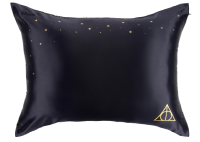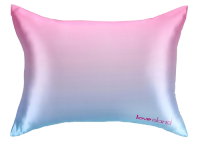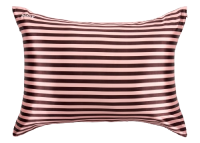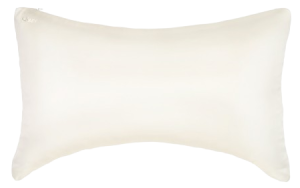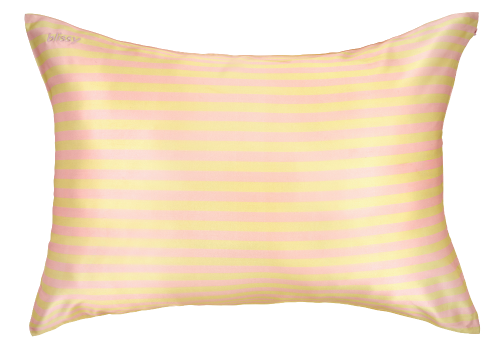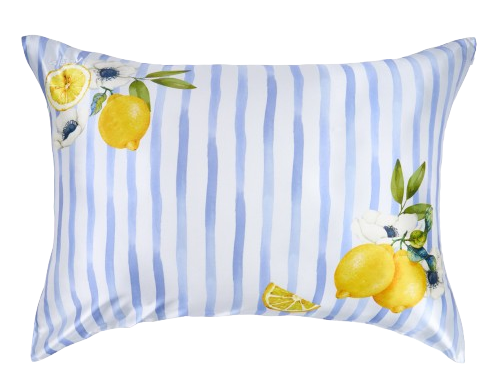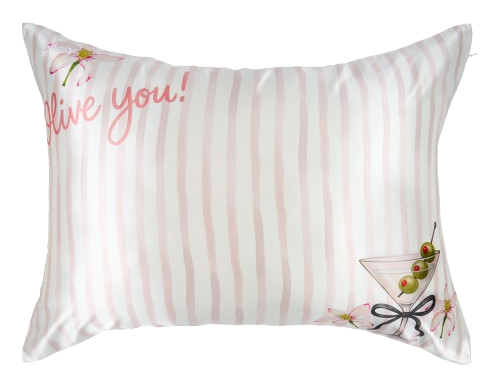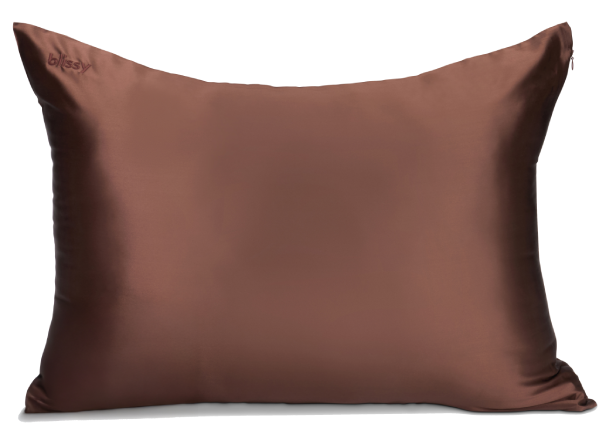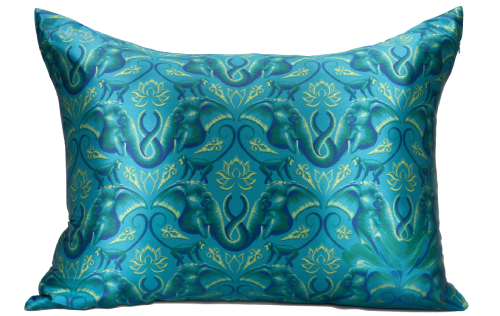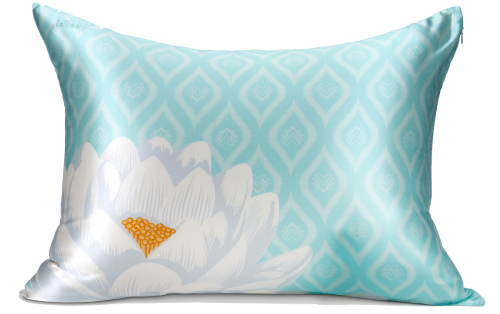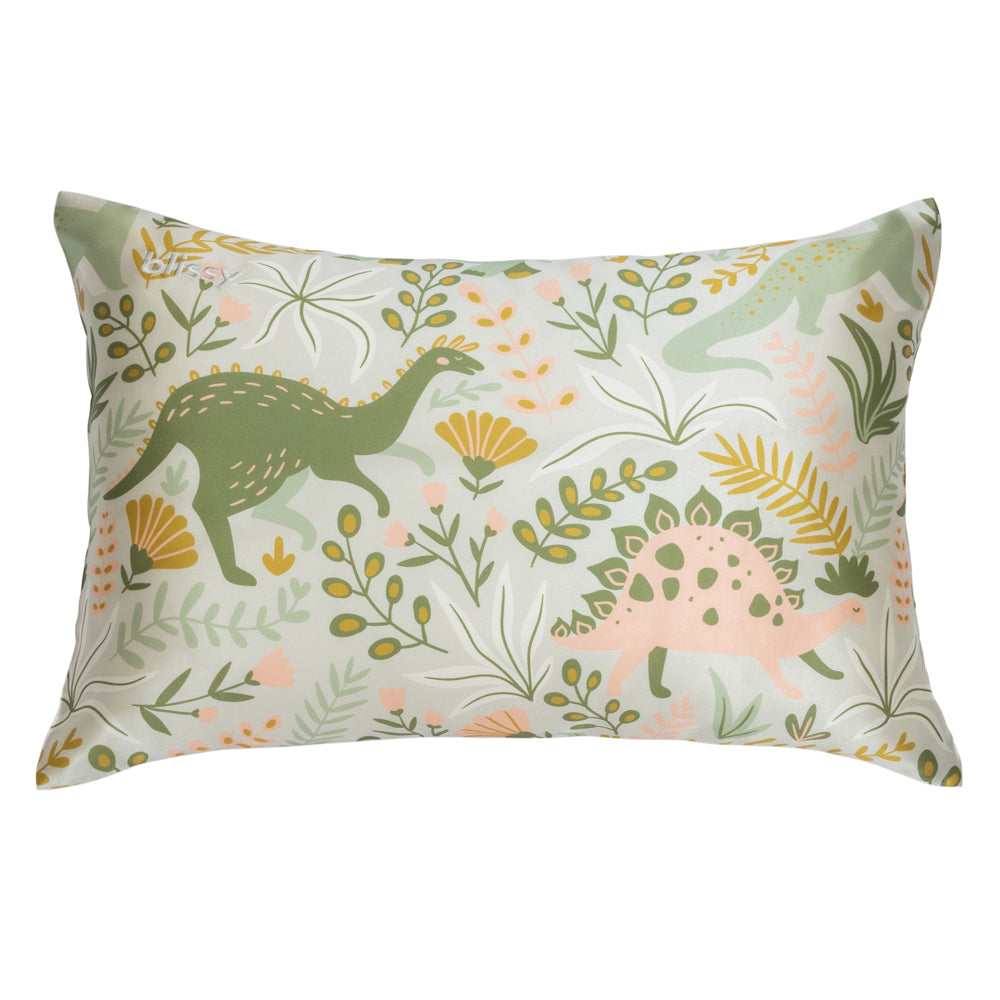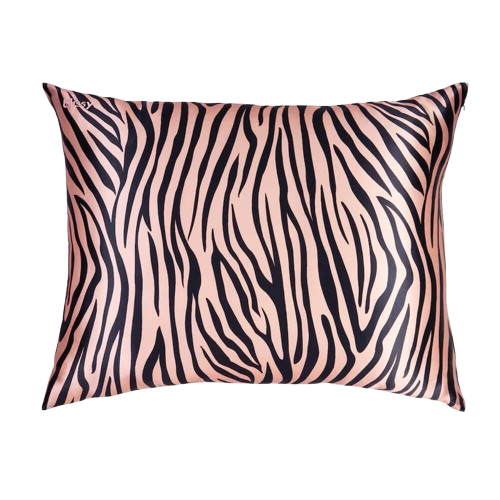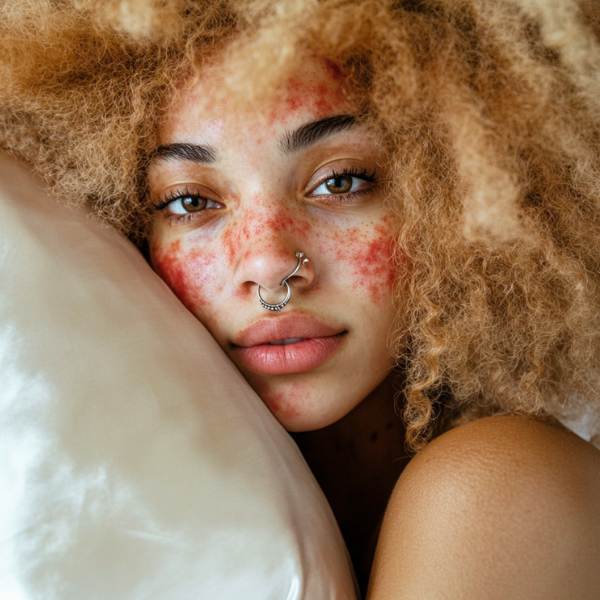Key Takeaways:
-
Satin, made from synthetic fibers, can trigger skin irritation and allergic reactions.
-
Its lack of breathability traps heat and oil, often leading to acne breakouts.
-
Silk helps retain skin moisture and offers hypoallergenic, friction-free comfort.
-
Switching to Blissy silk pillowcases can reduce flare-ups and support healthier skin.
Quick Answer: Can You Be Allergic to Satin?
Yes. Satin is usually made from synthetic fibers like polyester or nylon, which can trigger skin irritation, contact dermatitis, or acne breakouts—especially in sensitive skin. Heat, sweat, and chemical additives can make symptoms worse.
Common Symptoms of Satin Allergy
Satin may look smooth and luxurious, but it’s a common trigger of allergic reactions in people with sensitive skin. Made from synthetic fibers and often treated with chemical additives, satin fabric can easily irritate sensitive skin and provoke symptoms ranging from mild redness to severe inflammation.

These reactions are a type of contact allergy, where the body’s immune system reaction is activated by direct exposure to irritating materials. Satin's non-breathable surface also contributes to damp skin, friction, and skin irritation—especially when used in satin linens or clothing worn overnight.
According to the Mayo Clinic, common satin allergy symptoms include:
-
Itching or stinging sensations
-
Redness and blotchy skin
-
Burning or inflamed areas
-
Contact dermatitis with flaking or oozing
-
In severe cases, difficulty breathing due to airborne irritants
These symptoms may be mistaken for seasonal allergies, skincare reactions, or dust mite sensitivity, but if they flare up specifically after using satin products, it’s time to reconsider your materials.
Contact Dermatitis from Satin

One of the most common allergy symptoms linked to satin is contact dermatitis—a red, itchy rash that develops where the fabric touches your skin (AAD). This condition may include:
-
Redness or swelling
-
Itchy or irritated skin
-
Blisters or dry patches
-
Peeling or burning sensations
In sensitive skin individuals, allergic contact dermatitis may require topical treatments or a full personalized treatment plan. Repeated contact with satin products to those with an allergy can worsen flare-ups over time, making it crucial to choose silk or other hypoallergenic materials.
Pro Tip: If you recently bought a satin bonnet or satin pillowcase and it's causing an allergic reaction, consider switching to silk. Dermatologist-endorsed Blissy silk pillowcases, made from mulberry silk natural fibers, are clinically shown to help prevent allergic reactions.
Bacterial Concerns and Acne Breakouts from Satin

One of the most overlooked signs of a satin allergy is increased acne breakouts. Satin fabric can attract bacteria and trap oil on the skin—especially in warm, humid conditions (DermNet).
As noted by dermatologist Dr. Lortscher in Domino, synthetic fabrics such as polyester can trap oil and sweat. This combination can clog pores and lead to acne breakouts, folliculitis, or other skin problems, particularly for those sleeping on satin pillowcases.
This lack of breathability can:
-
Clog pores and lead to breakouts
-
Worsen hormonal or cystic acne
-
Exacerbate inflammation in those with sensitive skin
Switching to natural fabrics like silk material provides relief. Silk fibers help keep your skin barrier healthy and balanced.
Why Do I Get Allergic Reactions to Satin?

Allergic reactions to satin happens when the body’s immune system reacts to chemicals or synthetic fibers in satin fabric—often leading to skin irritation, itchy skin, or contact dermatitis.
Although satin may appear sleek and smooth, it’s typically made from synthetic materials like polyester or nylon. These fabrics often contain chemical additives that can irritate sensitive skin and trigger textile allergies, especially for those prone to allergic reactions.

Common irritants linked to satin include:
-
Synthetic fibers (polyester, nylon, acetate)
-
Chemical finishes (dyes, anti-wrinkle resins)
-
Trapped moisture and heat
-
Friction from tight or long-term contact
According to the American Academy of Dermatology, synthetic clothing is a common culprit behind contact dermatitis due to irritants or allergens in the fabric or dye source ( AAD).
Avoiding satin clothing and satin bed linens in favor of natural, hypoallergenic fabrics is a key part of effective sensitive skin care.
For lasting relief, dermatologists often recommend switching to hypoallergenic fabrics like pure silk—a naturally hypoallergenic material that offers soothing skin comfort for those with sensitive skin.
What Triggers Allergic Reactions to Satin?

The most common cause of a satin allergy is simple: direct contact with the material. According to Medical News Today, excess heat and trapped moisture—especially under synthetic fabrics—can trigger or worsen eczema and contact dermatitis.
Common irritants linked to satin include:
-
Synthetic fibers (polyester, nylon, acetate)
-
Chemical finishes (dyes, anti-wrinkle resins)
-
Trapped moisture and heat
-
Friction from tight or long-term contact
These effects are especially common with satin pillowcases, sheets, and other satin products worn or used overnight.
An academic study found that synthetic textiles are a leading cause of allergic contact dermatitis—especially when moisture and lack of airflow are present.
Satin Allergic Reaction Cause: Fabric Texture and Irritation

While satin appears smooth, it lacks the superior softness of natural materials like silk. The fabric may feel slippery, but it creates more friction against the skin than silk pillowcases or silk clothing, leading to micro-abrasions that can irritate sensitive skin over time.
Other Satin Problems: Dry Skin and Moisture Loss
Satin’s synthetic material doesn't help keep moisture in your skin.
This can result in:
-
Flakiness or rough texture
-
Tight, uncomfortable skin
-
Exacerbation of eczema or psoriasis
To help prevent dryness, experts recommend natural materials like silk, which is known for its hydrating properties and superior softness.
Relief Options for Satin Allergic Reactions

If satin is causing skin reactions, the most effective relief begins with eliminating exposure. Replace satin with natural fabrics that are less likely to trigger allergic reactions.
Mulberry silk, for example, is a breathable, hypoallergenic material that helps sooth sensitive skin, minimize friction, and support a healthier skin barrier. By switching to Blissy silk pillowcases you can significantly reduce flare-ups and promote recovery.
Top Hypoallergenic Fabric Alternatives to Satin

If silk isn’t your top choice or you're exploring additional options, here are a few dermatologist-approved alternatives:
-
Silk: Naturally hypoallergenic and ultra-gentle, silk helps retain moisture, reduce friction, and soothe sensitive skin.
-
Bamboo: Naturally hypoallergenic and breathable, bamboo fabric is soft, eco-friendly, and ideal for sensitive skin. It’s also moisture-wicking and temperature regulating.
-
TENCEL™ (Lyocell): Made from sustainably sourced wood pulp, TENCEL™ is gentle on the skin, breathable, and less likely to harbor bacteria or irritants.
-
Organic Cotton: Unlike conventional cotton, organic cotton is free from harsh chemicals and pesticides, making it a safer pick for those with fabric sensitivities.
-
Modal: Derived from beech tree pulp, modal is smooth, breathable, and considered less irritating than synthetic fabrics.
-
Hemp: Naturally antimicrobial and breathable, hemp fabric is durable and can be a great hypoallergenic option when softened properly.
These natural or semi-synthetic materials offer breathable, chemical-free alternatives for those allergic to synthetic satin—or even silk in rare cases.
Satin vs. Silk: Which Is Safer for Sensitive Skin?
Most people that buy satin are looking for a cheaper alternative to silk. But that cheaper alternative comes at a cost to your skin. Here is a chart comparing synthetic satin with natural silk.
|
Property |
Satin (Synthetic) |
Silk (Natural) |
|
Fiber type |
Polyester, acetate, nylon |
100% silk proteins (mulberry silk) |
|
Breathability |
Low – traps heat and sweat |
High – regulates body temperature |
|
Skin hydration |
Draws moisture away, may cause dry skin |
Helps retain skin moisture overnight |
|
Allergen risk |
High – contains dyes and irritants |
Low – hypoallergenic properties |
|
Skin comfort |
Can cling, pull, or cause irritated skin |
Ultra soft and gentle on sensitive skin |
For optimal skin health, choosing silk over satin fabric is a smart move—especially if your skin is easily irritated or allergy-prone.

Silk's Natural Hypoallergenic Properties
Silk is a naturally hypoallergenic material that’s ideal for individuals prone to allergy symptoms. Unlike synthetic materials, silk doesn’t contain harsh chemical finishes and allows the skin to breathe.
According to Wyndly, silk’s natural structure makes it resistant to dust mites, mold, and other allergens, making it ideal for individuals with sensitive skin, eczema, or asthma.
And thanks to its smooth surface, silk glides over the skin with minimal friction, reducing the chance of irritation from direct contact.
Blissy Silk: A Dermatologist-Recommended Option

For a trusted, tested option, Blissy silk pillowcases and bonnets stand out. Made from 100% mulberry silk and crafted to the highest quality standards, they provide exceptional softness, breathability, and skin-soothing comfort.
Their hypoallergenic properties make them a safe choice for almost everyone—including those with a history of satin allergy or other fabric sensitivities.
What makes them different?
-
Clinically tested to be non-irritating and safe for sensitive skin
-
Designed to regulate body temperature, keeping you cool and dry throughout the night
-
Naturally repels allergens like dust mites, making them ideal for those prone to allergy symptoms
-
Reduces friction on the skin, which helps minimize acne breakouts and irritation
Users often report fewer breakouts, less redness, and softer, more hydrated skin after switching from satin to Blissy silk (Blissy PCR Study).
What If You’re Allergic to Silk?
Severe silk allergies are rare but possible. In most cases, the reaction is to sericin protein, which is typically removed during processing. If you suspect you're allergic to silk, consider enzyme-washed or sericin-free options—or consult a dermatologist about alternative natural fabrics like linen, bamboo, or TENCEL™.
Long-Term Relief Through Prevention and Fabric Choice

Achieving long-term relief from satin allergy requires a combination of awareness and proactive fabric choices. Here’s what experts often recommend:
- Identify your triggers – Track when and where flare-ups happen
- Switch to hypoallergenic bedding and clothing – Prioritize sensitive skin silk or bamboo
- Hydrate and protect the skin – Use gentle moisturizers that help prevent dry skin
- Use natural remedies – Soothing baths with oatmeal or apple cider vinegar can offer comfort
- Consult a dermatologist – For persistent skin problems, consider a personalized treatment plan
According to Healthline, treating contact dermatitis caused by fabric exposure begins with identifying and avoiding the irritant, switching to hypoallergenic alternatives, and incorporating natural home remedies like oatmeal baths to soothe inflammation.


